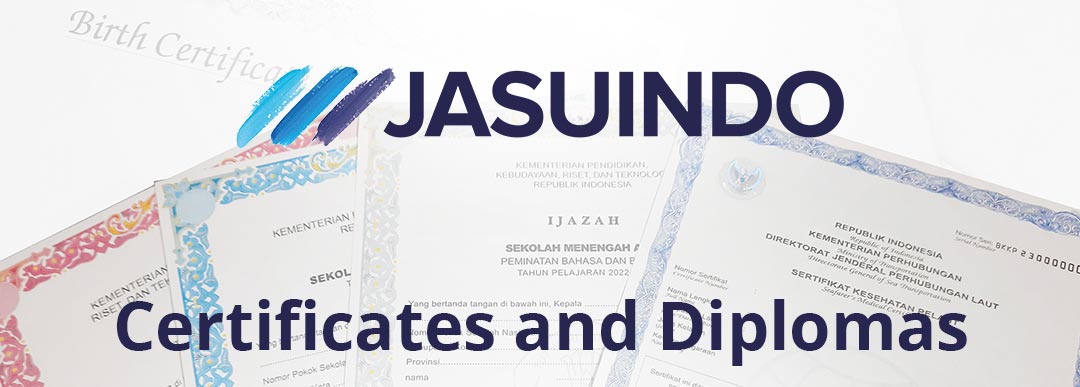
Function, Security Features, and Tips for Certificates and Diplomas
The certificate is authentic proof with high security features
Nowadays, authentication and verification are the main keys in various aspects of life. This also applies to important documents issued by the government or related institutions, such as certificates
A certificate is authentic evidence that has a crucial function and is not just an ordinary piece of paper, such as:
- Proof of Ownership: Land, vehicle, or other property certificates serve as valid proof of asset ownership for individuals and institutions.
- Proof of Qualification: Professional certificates, diplomas, and awards issued for a competence person and qualifications in a particular field.
- Proof of Legality: Business certificates, product distribution permits, and other legal documents serve as proof of compliance with applicable regulations and standards.
Realizing the importance of the role of certificates, the government and related institution has implemented various security measures to prevent forgery and misuse. One of the main efforts is to adopt security printing technology in the certificate making process.
Security printing is a special printing technique that combines various security features to make it difficult to counterfeit documents. These features are not only visible to the naked eye, but are also integrated into the structure and material of the certificate.
Some examples of security features commonly used in certificates:
- Special Inks: Special inks with certain effects, such as UV ink, magnetic ink, and iridescent ink, can only be seen or detected with special tools.
- Holograms: Three-dimensional holograms with complex and difficult-to-imitate images become easily recognizable security elements.
- Microtext: Microscopic text that can only be read with a microscope or magnifying glass and is hidden in the certificate design.
- Watermarks: Hidden images that appear when the certificate is held up to the light, usually the logo or symbol of the issuing agency.
- Security Thread: Security thread embedded in the certificate, commonly containing special metal or plastic fibers.
- Embossing: Embossed writing or images that are felt when touched, difficult to counterfeit with ordinary printing techniques.
Implementing these security features in certificates provides several advantages:
In addition to the security features integrated into the certificate, this important document must be supported by a strict control and monitoring system in the printing and distribution process. This aims to ensure that only valid and authentic certificates are circulated in the community.
In conclusion, a certificate is not just an ordinary document, but authentic evidence that plays an important role in various aspects of life. The application of security printing technology with its various security features is a crucial step in maintaining the integrity and validity of the certificate, thereby increasing trust and security for the community.
Tips to keep your certificate safe:
- Store your certificate in a safe place away from sunlight, water, and extreme temperatures.
- Avoid folding, tearing, or writing on the certificate.
- Report your certificate to authorities immediately if it is lost or stolen.
- Double-check the security features on your certificate before using it.
By understanding the importance of certificates and their security measures, we can contribute to maintaining the validity and integrity of the information contained therein.
If you are looking for the best security printing company to make certificates or diplomas, please contact us. We have more than 30 years of experience in the field of security printing and have various security features that can be applied to certificates and diplomas according to your needs.
